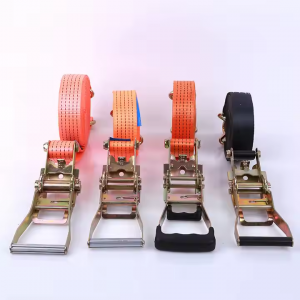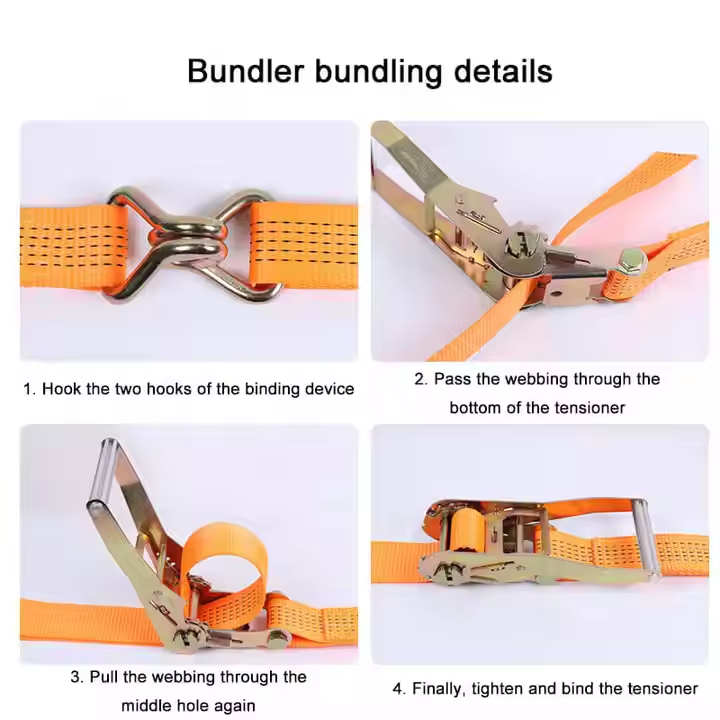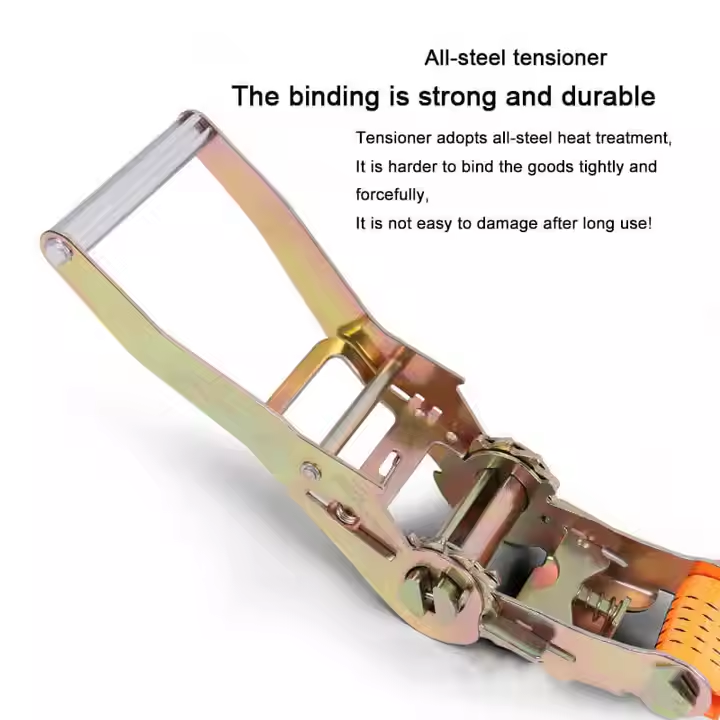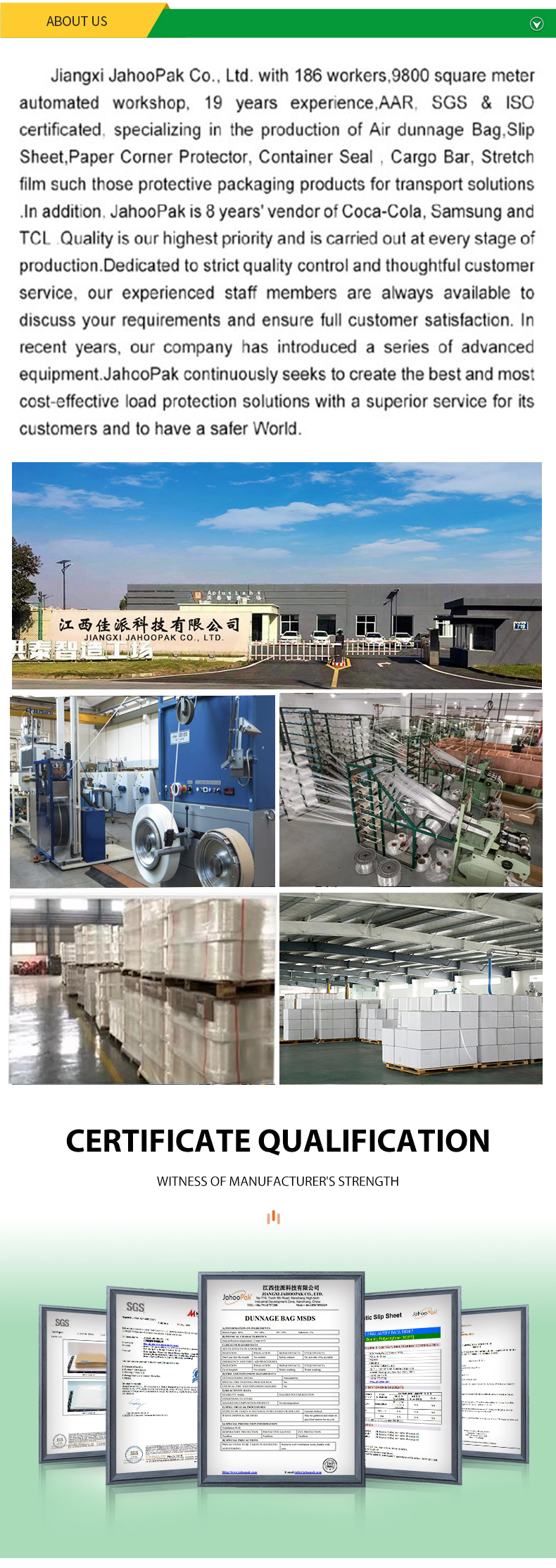Product profile
A ratchet tie-down (also called a ratchet strap) is a tensioning device used to secure cargo during transport. It consists of a webbing strap (usually polyester or nylon), a ratchet mechanism, and hooks or loops on both ends. The ratchet allows for precise tightening and locking to keep loads stable.
Product application
- Attach the Hooks
- Secure the hooks to anchor points on the truck, trailer, or cargo (e.g., D-rings, tie-down rails).
- Ensure hooks are properly engaged to prevent slipping.
- Pull the Strap Through
- Extend the strap over the cargo and insert the loose end into the ratchet mechanism.
- Tighten the Strap
- Operate the ratchet handle back and forth to tighten the strap incrementally.
- The ratchet locks the strap in place with each motion, preventing loosening.
- Lock & Secure
- Once the desired tension is achieved, close the ratchet handle fully to lock it.
- Check for tightness and adjust if needed.
- Release the Strap
- Open the ratchet handle fully and press the release lever to loosen the strap.
Why need use the ratchet tie down for cargo
- Secure Heavy Loads – Prevents shifting or falling during transport (essential for trucks, trailers, motorcycles, furniture, etc.).
- Precise Tension Control – The ratchet mechanism allows for tight, even pressure.
- Safety Compliance – Meets transport regulations for cargo security.
- Reusable & Adjustable – Unlike ropes or bungee cords, ratchet straps can be reused and adjusted easily.
The advantage of ratchet tie down
✅ Strong & Durable – Made from high-strength webbing (often 1,000+ lbs capacity).
✅ No Slippage – Ratchet mechanism locks tension in place.
✅ Versatile – Used for vehicles, equipment, furniture, and more.
✅ Easier to Use – Faster and more secure than knots or chains.
✅ Weather-Resistant – Many straps are UV-treated and waterproof.
Company profile

















